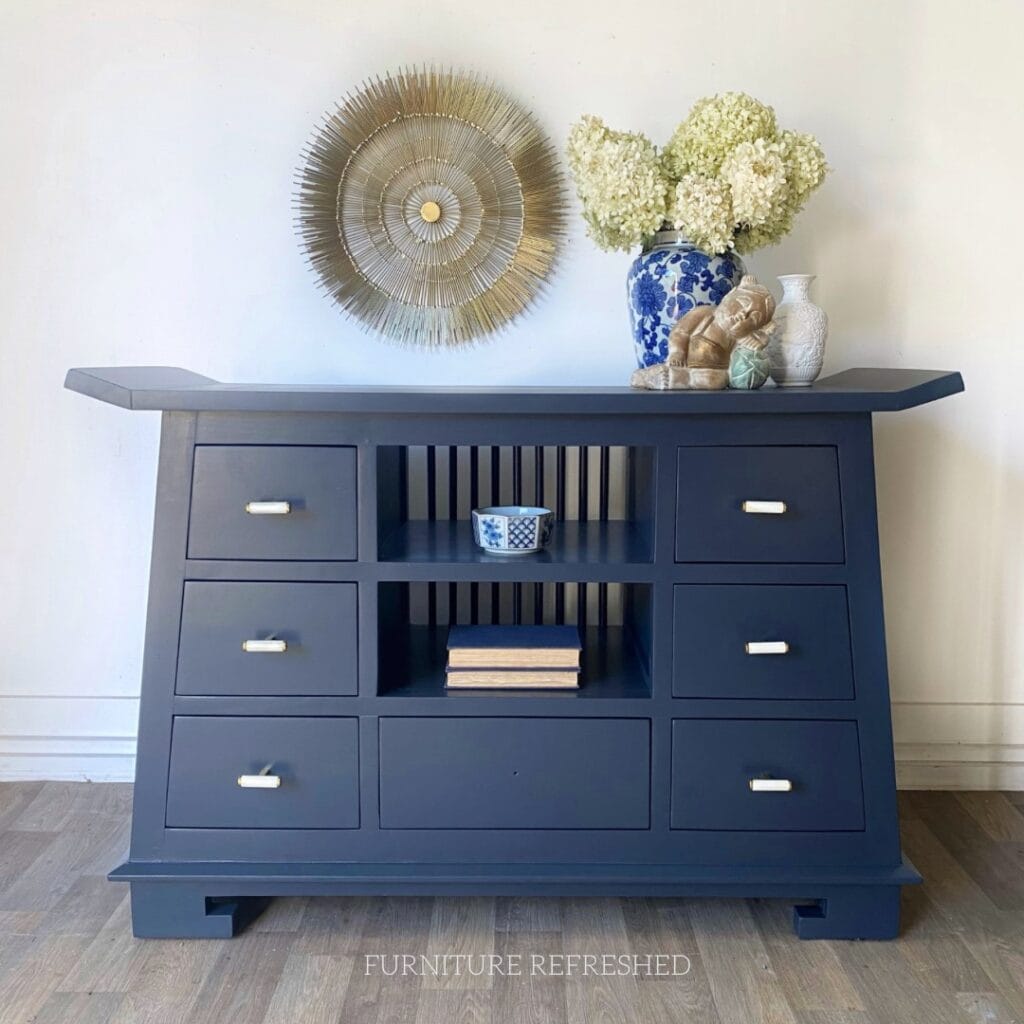Priming Furniture For Paint
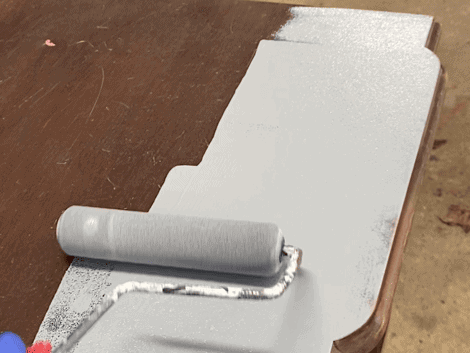
Let’s talk priming furniture! Your plan is to paint a piece of furniture. The furniture paint says no primer is needed, or the primer is included. So, can you really skip this step? And if you are priming, what to use? The short answer is that it depends, really, on two things – the condition of the piece and your desired final finish. Keep reading to learn everything you need to know about priming furniture for paint!
Quick Tip
Before priming, be sure you have cleaned, scuff-sanded, and made any necessary repairs! These steps are a must for a durable painted finish.
Can you paint furniture without priming?
As I mentioned already, there is no right answer to this question. Many furniture paints say priming isn’t necessary with their product. And this is great, right? It saves time and money!
However, I’ve found that even when using these paints, there are times when a primer is necessary. Unfortunately, you don’t always know until you get your final coat of paint on and realize there’s a problem. I’ve had this happen to me multiple times, and the only solution is to sand off your paint and start from scratch.
After painting (and priming) many pieces of furniture over the years, I have found that a project usually falls into one of four priming scenarios. These are priming for bleed through prevention, priming a laminate or glossy surface, priming when the original finish is compromised, and no priming is necessary. I’ve laid out each scenario below, along with the product(s) I recommend for each.
A note on product links
This post contains Amazon affiliate links, meaning I get a small commission on qualifying purchases, at no cost to you.
Scenario 1: Bleed through prevention
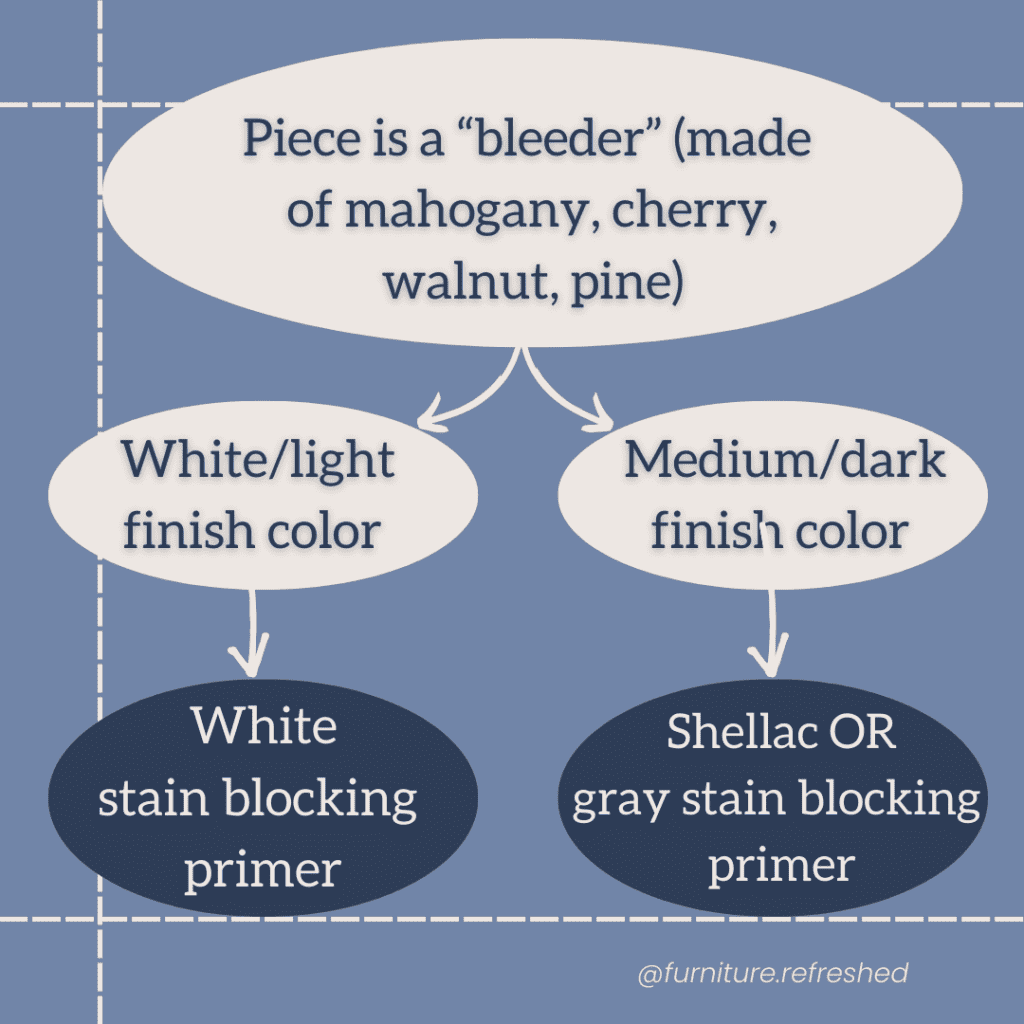
Some furniture is made from wood species that tend to “bleed through” water-based products. So what does this mean? Without getting into too much detail, these woods have tannins in them that are pulled to the surface by water (and water-based products). It may not happen immediately – sometimes it waits until you’ve gotten to the top coating step, or even a few days after you’ve completed a piece. I paint a lot of mahogany and mahogany veneered pieces, so I’ve dealt with my fair share of bleed through (and have an entire post devoted to painting mahogany furniture if you’d like to learn more).
To combat bleed through, I always prime tannin-rich wood furniture with a stain-blocking primer to avoid any potential extra work down the road. The type of stain-blocking primer depends on the color you want to use for the project. If the piece is going to be a light paint color, I’ll use a white stain-blocking primer. These are my 2 favorites, both great at blocking stains with 2-3 coats:
For a light paint color:
- BIN shellac based primer: not water-based, needs to clean brush/roller with alcohol or throw it away, high VOC (need to wear mask and I don’t use it inside), less expensive option.
- Melange Paints stain blocking primer: water-based, can clean up with water, low VOC (can safely work inside), more expensive option.
For a dark paint color:
- Shellac: yes, you can use straight shellac as primer! It has the same pros and cons as I listed above for BIN. If I want to distress the final finish, I will use shellac so I don’t see any primer.
- Melange Paints stain blocking primer in gray: It is the same product as above, but in gray. It’s great for dark colors or if you are painting a highly pigmented color like red or yellow.
Scenario 2: Laminate/Glossy Finish
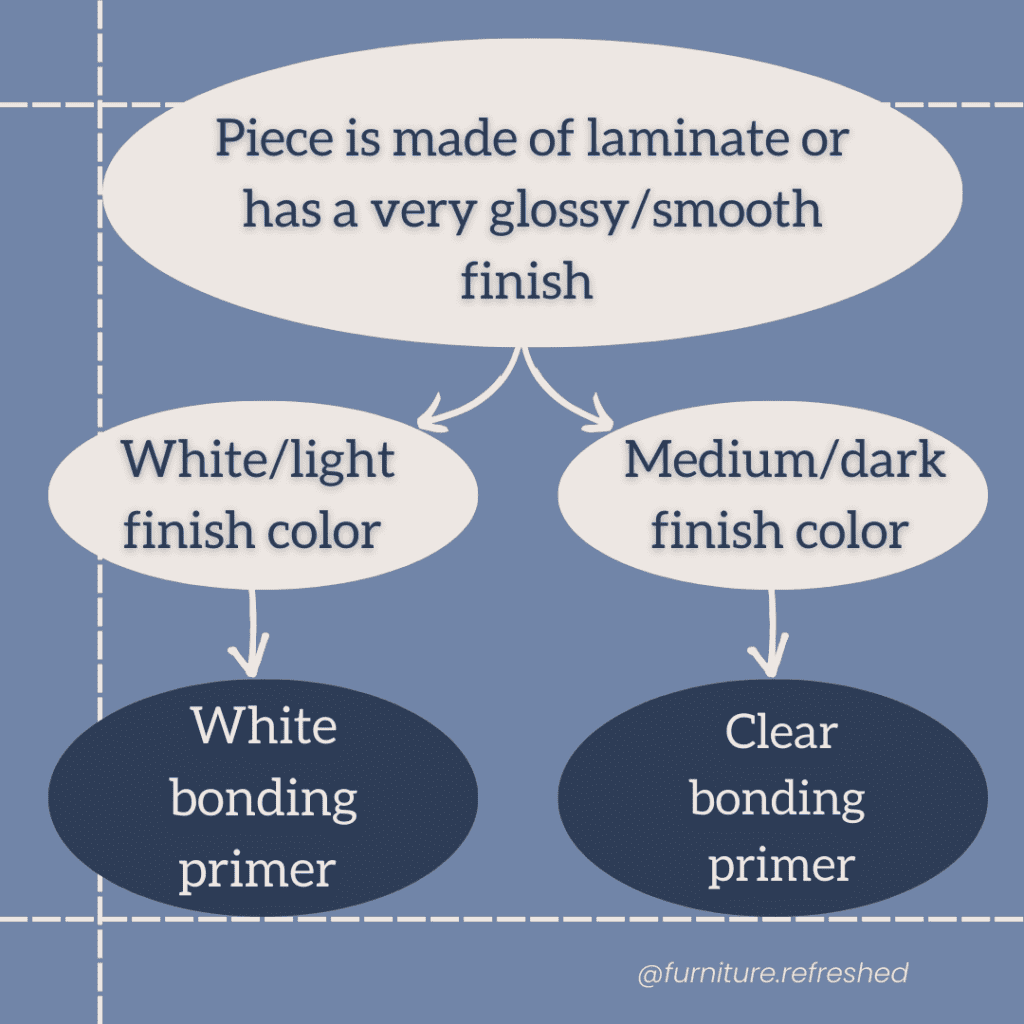
Would you like to save this?
Furniture made from laminate, Formica, or that has a very glossy “factory finish” is another type that needs special consideration. Even with some sanding, the surface doesn’t roughen up enough for good paint adhesion. When you have these types of pieces, use a bonding primer (and check out my other laminate furniture painting tips here). I have a couple of bonding primers I use routinely, and again, it depends on the final color choice.
For a light paint color:
- STIX bonding primer: water-based, cleans up well with water, less expensive.
For a dark paint color:
- Melange Clear Bonding Primer: water-based, cleans up well, a little more expensive than STIX, but if I’m going for a darker color, it’s worth it because I’ll likely do fewer coats of paint. If I’m distressing the final finish, I will use this clear primer to avoid seeing any white.
Scenario 3: Original Finish Removed
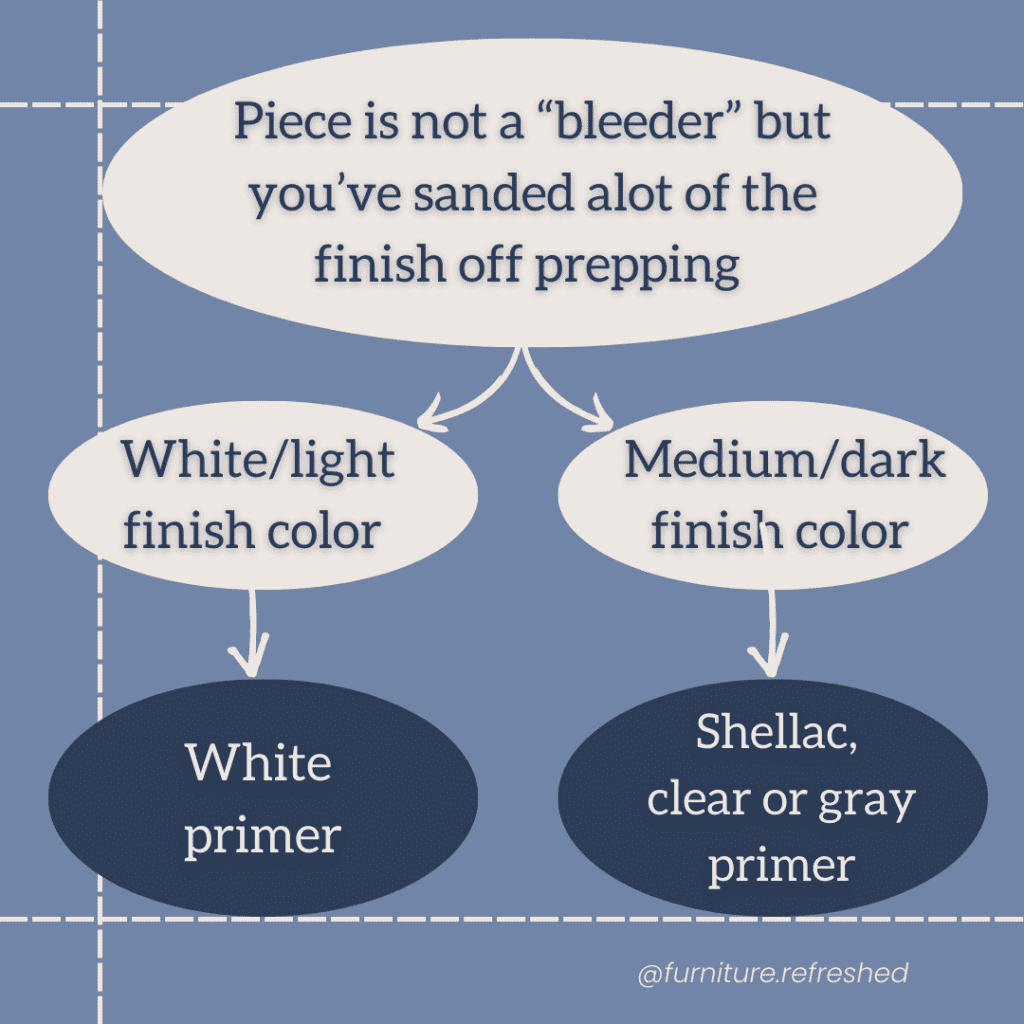
Some furniture is made of wood and not likely to bleed. However, the original finish is deteriorating and has lots of scratches or dings that need sanding out. After the cleaning, repair and scuff sanding steps, there are areas of raw unfinished wood. These areas absorb the paint differently, and the finish will not be uniform. Use a primer to seal up these areas and give a uniform surface for paint. Any of the primers listed above will work, I’ll use what I have on hand, taking into account my final color choice.
Scenario 4: No Primer Needed!
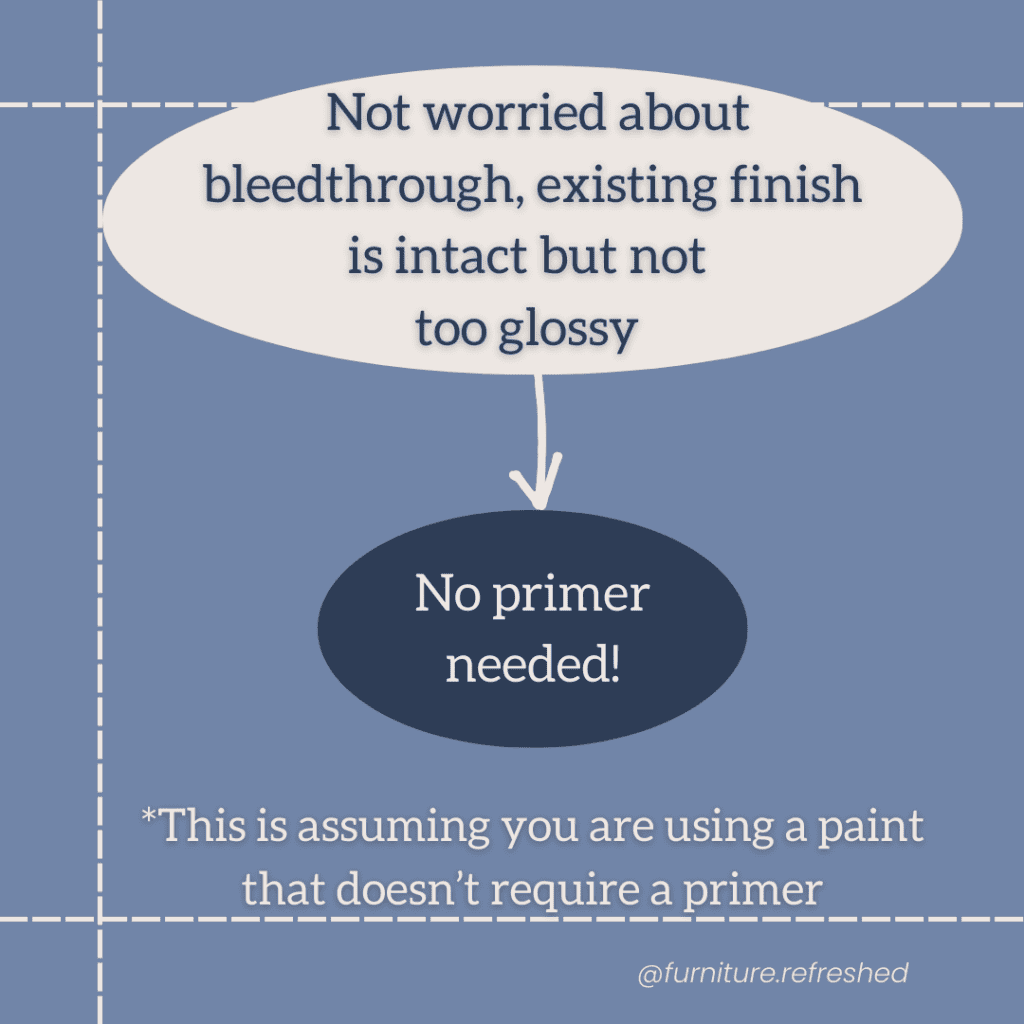
When all of the stars align, you’ll get this scenario – you aren’t concerned about bleed through, the piece has a finish on it that is not damaged, and is not too smooth or glossy. If these criteria are met, skip the primer and go straight to paint. This, assumes the finish paint you are using doesn’t recommend primer – make sure to read your labels.
Furniture Priming Cheat sHeet
Want all of this information at your fingertips? Download this free furniture priming cheat sheet and keep it in your workspace for quick reference.
Summary
Priming is often a necessary step in a painted furniture makeover. It ensures better adhesion, a smoother finish, and prevents issues like bleed-through. By understanding your piece’s condition and your desired final look, you can choose the right primer—or confidently move forward without one. I would say I prime about 90% of my painted pieces. And no matter the project, taking the time to prep properly will always pay off. Have questions about priming? Let me know in the comments!
Be sure to check out my other posts on furniture painting basics:
New to furniture painting?
Get my FREE Beginner’s Guide to Painting Furniture! This guide walks through the steps of a furniture painting makeover and includes a downloadable project planner and supply checklist.




